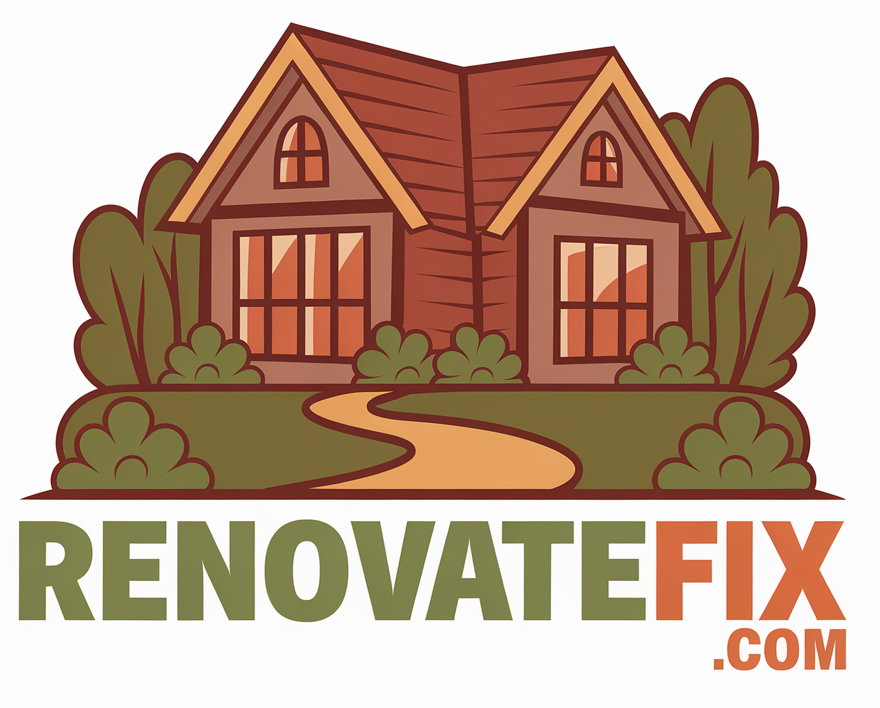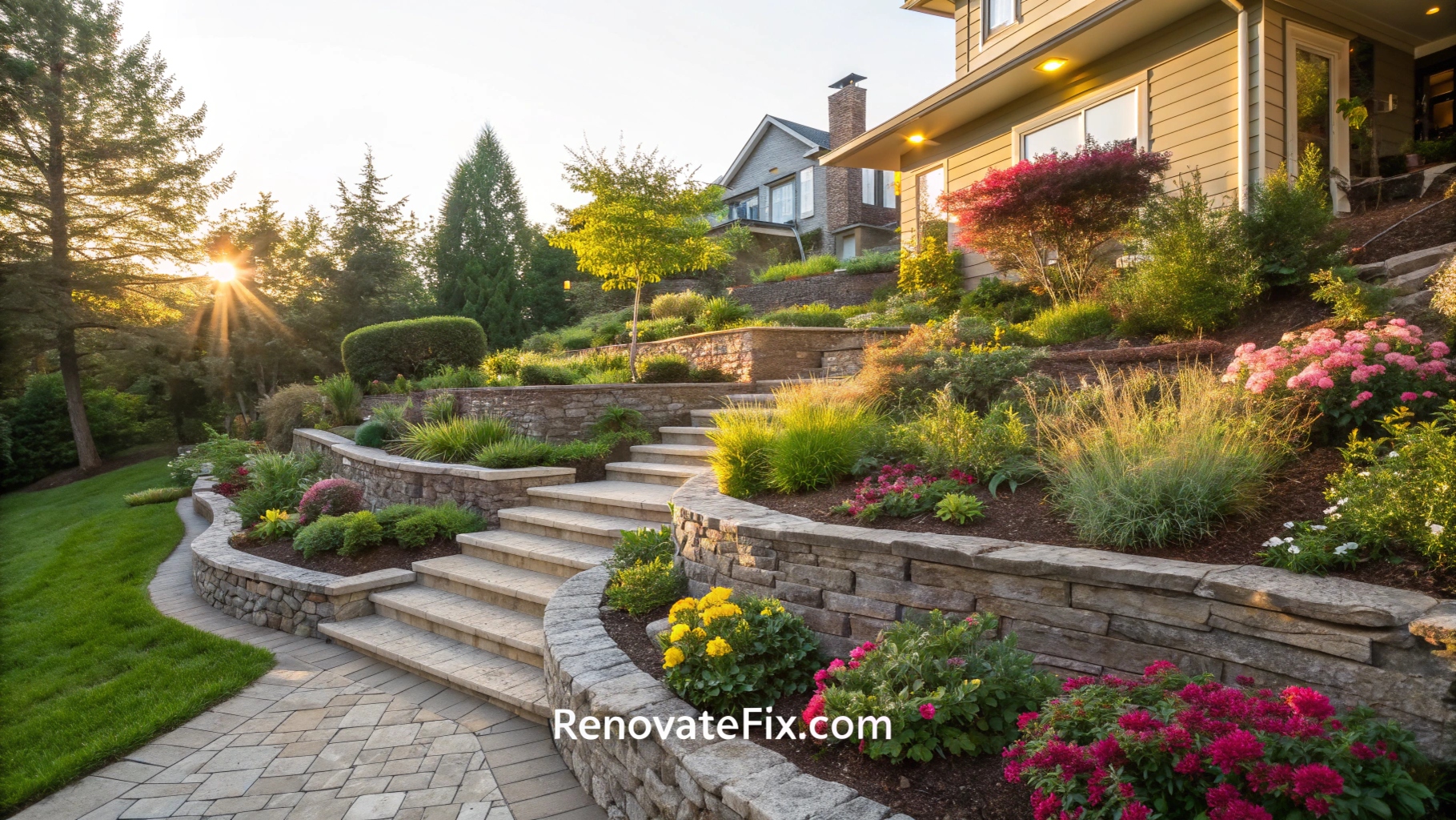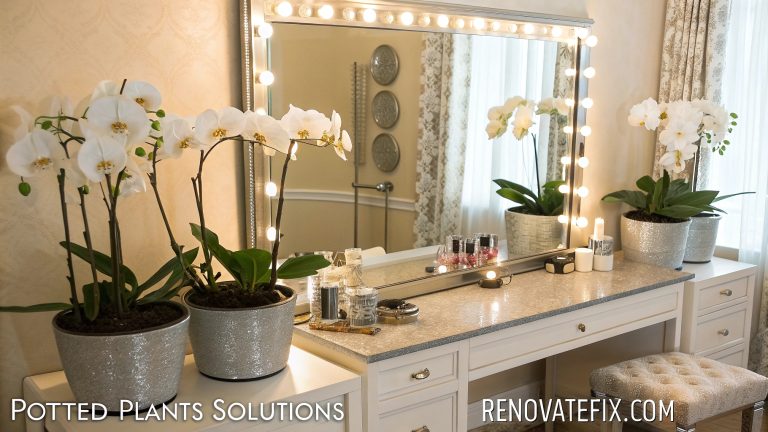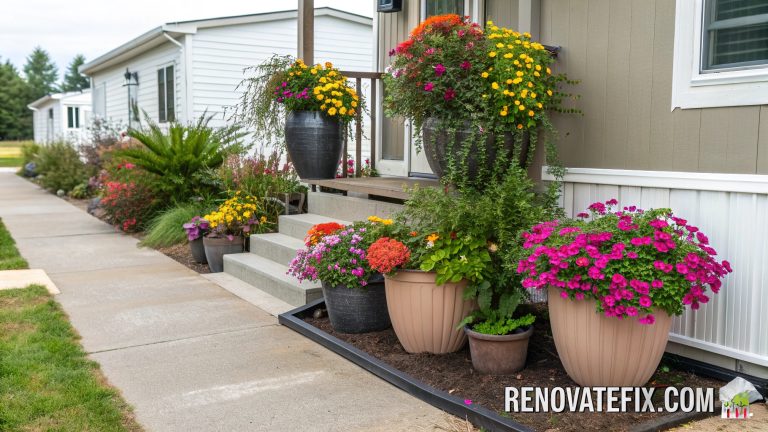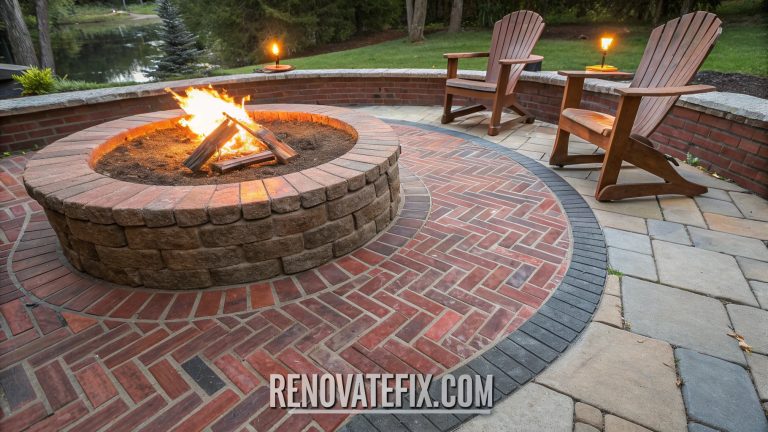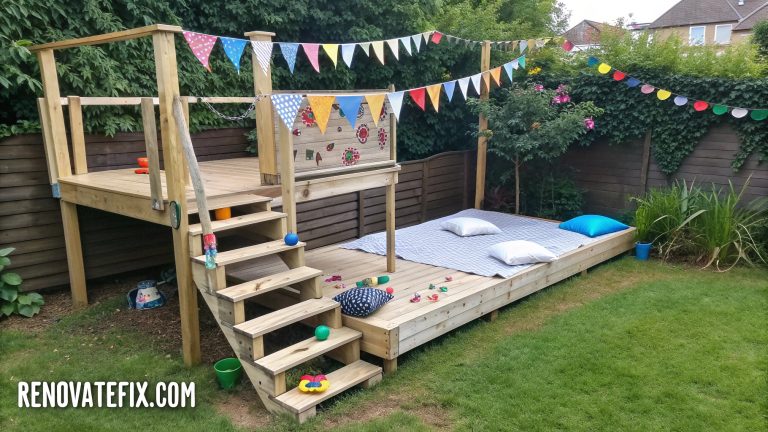Creative Backyard Landscaping Ideas to Elevate Your Outdoor Space
Your backyard represents unlimited potential—a blank canvas waiting to be shaped into your personal outdoor paradise.
With thoughtful landscaping, even modest spaces can be reimagined into stunning retreats that boost your property’s value while providing a private sanctuary for relaxation and entertainment.
This comprehensive guide presents 24 innovative backyard landscaping ideas spanning various budgets, styles, and maintenance levels.
Whether you’re seeking a complete yard overhaul or simply want to refresh certain areas, these concepts will inspire you to create an outdoor environment that perfectly aligns with your vision and lifestyle needs.
1. Multi-Level Garden Terraces
Construct graduated planting areas at varying heights to add visual interest and dimension to flat yards. These stepped garden platforms optimize challenging sloped terrain, creating distinctive zones for different plant varieties while minimizing erosion concerns.

Well-executed terracing establishes dramatic focal points through elevation changes, drawing the eye upward and making modest spaces appear significantly larger through strategic vertical gardening approaches.
2. Natural Stone Pathway
Craft winding walkways using flagstone, slate, or river rock to connect different backyard zones with organic flow.
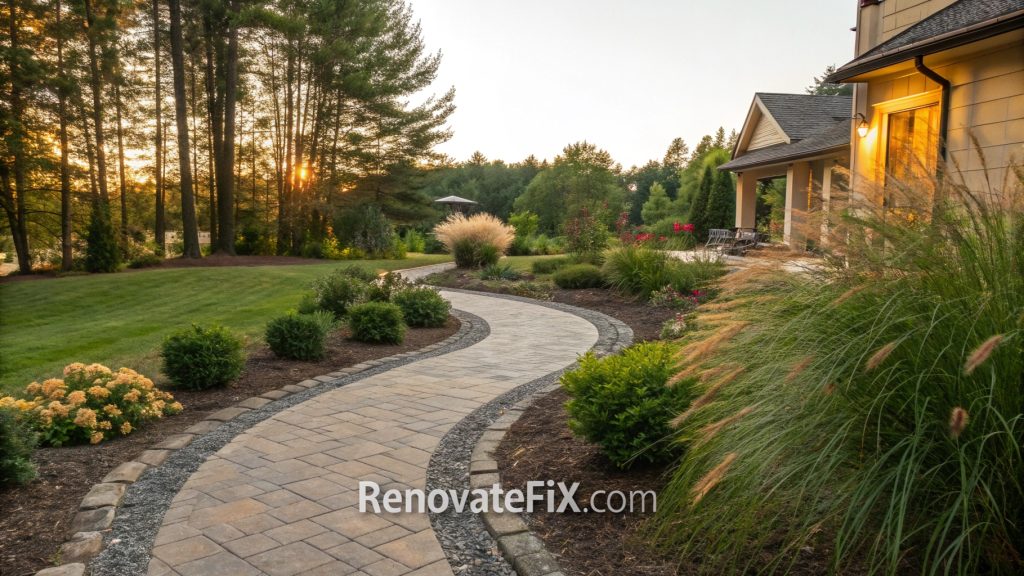
These paths guide visitors through your outdoor space while protecting grass from foot traffic damage and reducing muddy areas after rainfall.
Stone pathways require minimal upkeep once properly installed and weather beautifully over time, developing rich patinas that enhance their natural beauty and integration with surrounding greenery.
3. Edible Garden Beds
Establish dedicated growing spaces for vegetables, herbs, and fruits in raised wooden or metal containers.
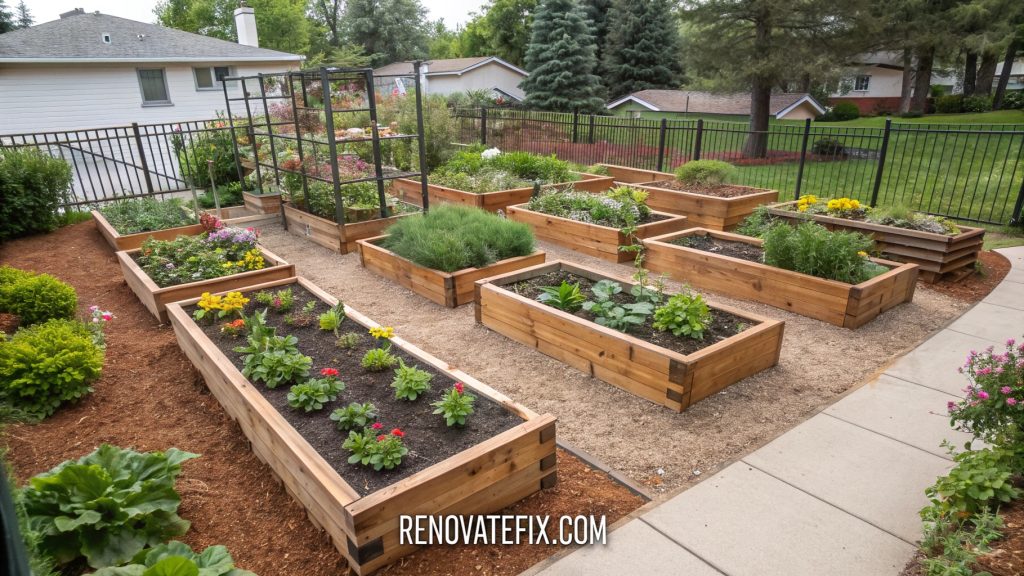
Edible gardens combine practicality with beauty, supplying fresh produce while creating structured visual elements within your yard layout.
Properly positioned food gardens maximize sunlight exposure and accessibility for maintenance, while offering opportunities to experiment with companion planting techniques that naturally deter pests without chemicals.
4. Water Feature Focal Point
Install ponds, fountains, or gentle waterfalls to introduce soothing auditory elements that mask urban noise pollution.
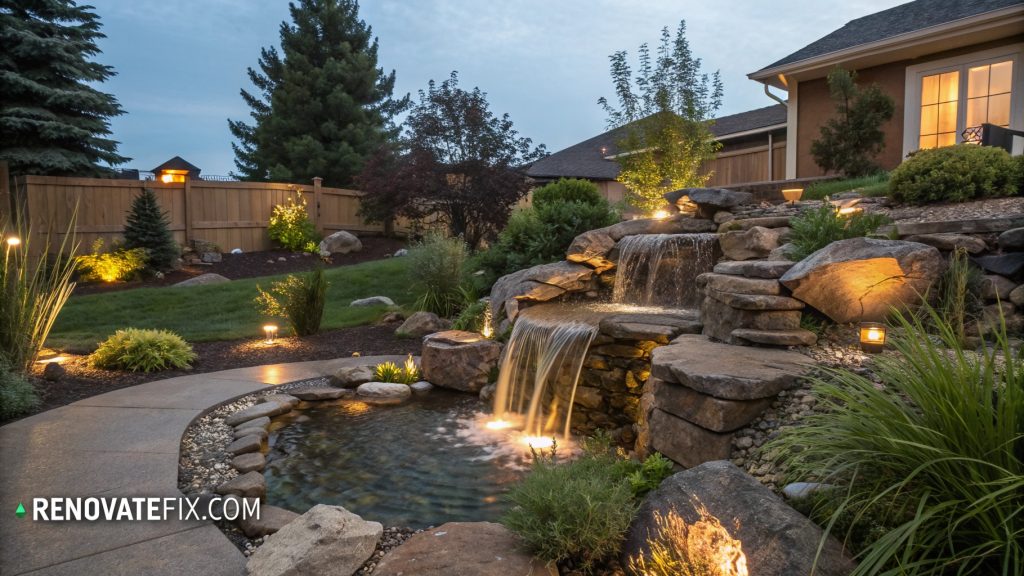
Water features attract beneficial wildlife like birds and pollinators, creating miniature ecosystems that enhance biodiversity within suburban settings.
Moving water catches sunlight throughout changing daylight conditions, producing mesmerizing visual effects through reflection, refraction, and gentle rippling motion that captivates attention and promotes relaxation.
5. Outdoor Living Room
Create cozy gathering spaces with weather-resistant furnishings arranged around fire pits or outdoor fireplaces for year-round enjoyment.
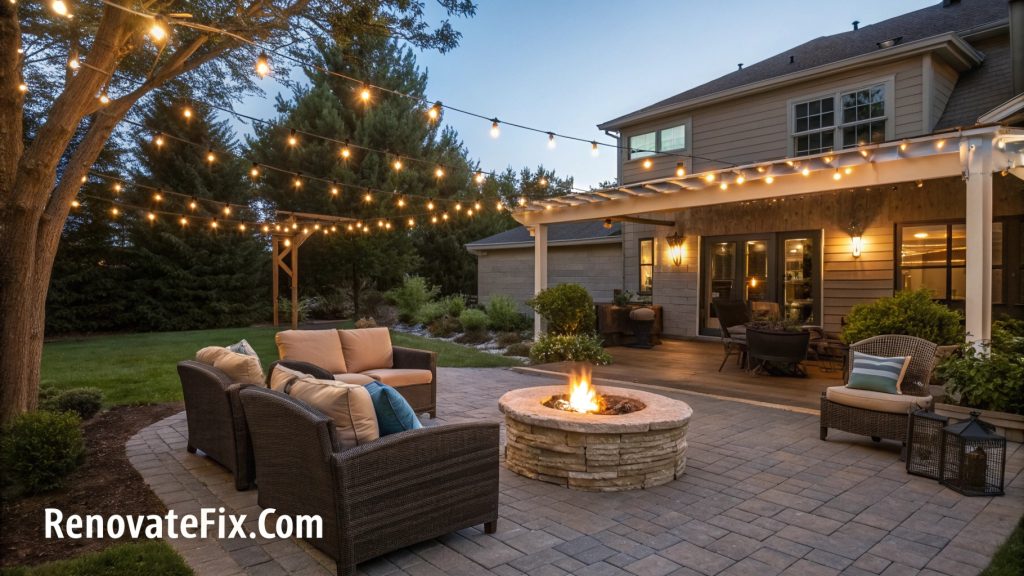
Thoughtfully positioned seating areas extend functional living space beyond interior walls, effectively increasing your home’s usable square footage during pleasant weather months.
Quality outdoor furniture collections anchor various activity zones, establishing intimate conversation areas where friends and family naturally congregate during social gatherings.
6. Vertical Growing Walls
Mount living walls or espalier fruit trees against fences or blank exterior walls to maximize growing space in compact yards.
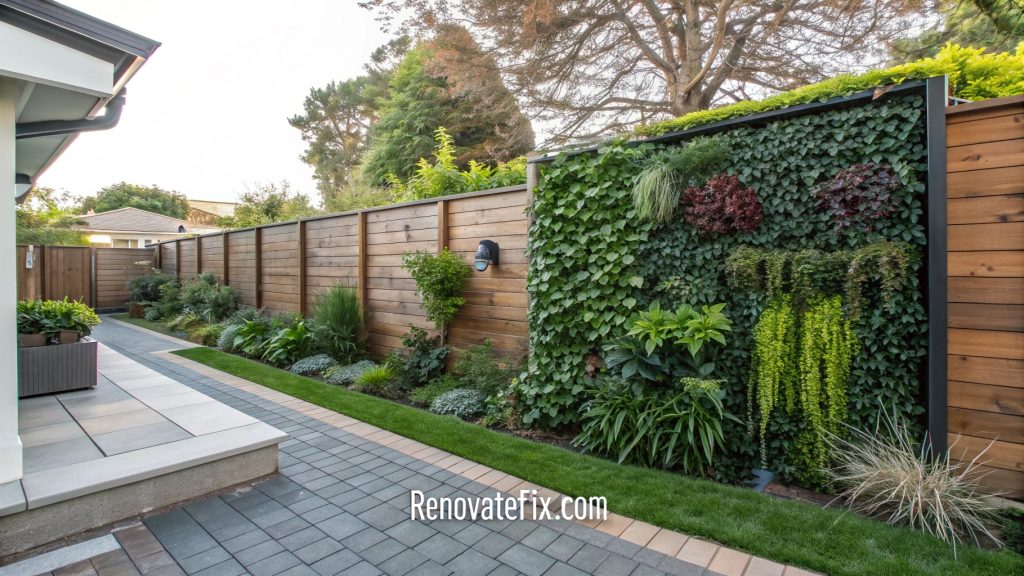
Vertical gardening solutions hide unsightly boundaries while providing abundant planting opportunities without consuming valuable ground square footage.
These green installations act as natural insulators, cooling adjacent structures during summer months while offering habitats for beneficial insects that support overall garden health.
7. Mood Lighting Systems
Install layered outdoor lighting combining path markers, uplighting for trees, and ambient string lights to extend outdoor usage hours.
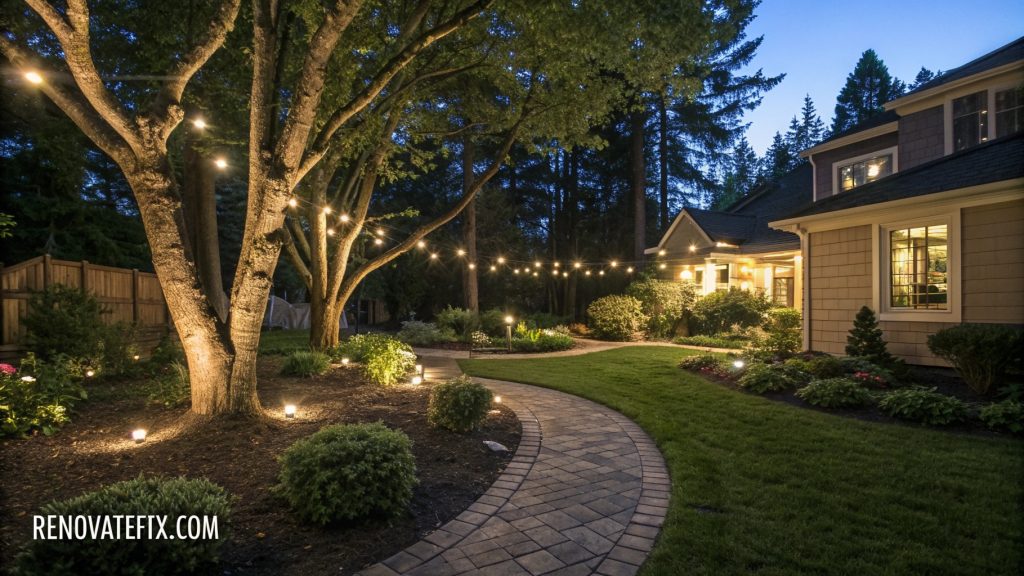
Strategic illumination highlights architectural features and specimen plants while ensuring safe navigation through garden spaces after sunset.
Properly placed lighting creates dramatic shadows and silhouettes throughout your landscape, transforming ordinary garden elements into extraordinary nighttime visual experiences.
8. Secluded Reading Nook
Carve out peaceful retreats beneath shade trees or within garden alcoves using hammocks, comfortable seating, and small side tables.

Private garden corners dedicated to relaxation provide essential mental health benefits through connection with nature and momentary escape from daily stresses.
These intimate spaces function as outdoor meditation areas where background garden sounds and pleasant scents promote mindfulness practices and creative thinking.
9. Permeable Paving Solutions
Replace solid concrete patios with environmentally friendly options like permeable pavers, gravel, or decomposed granite surfaces.
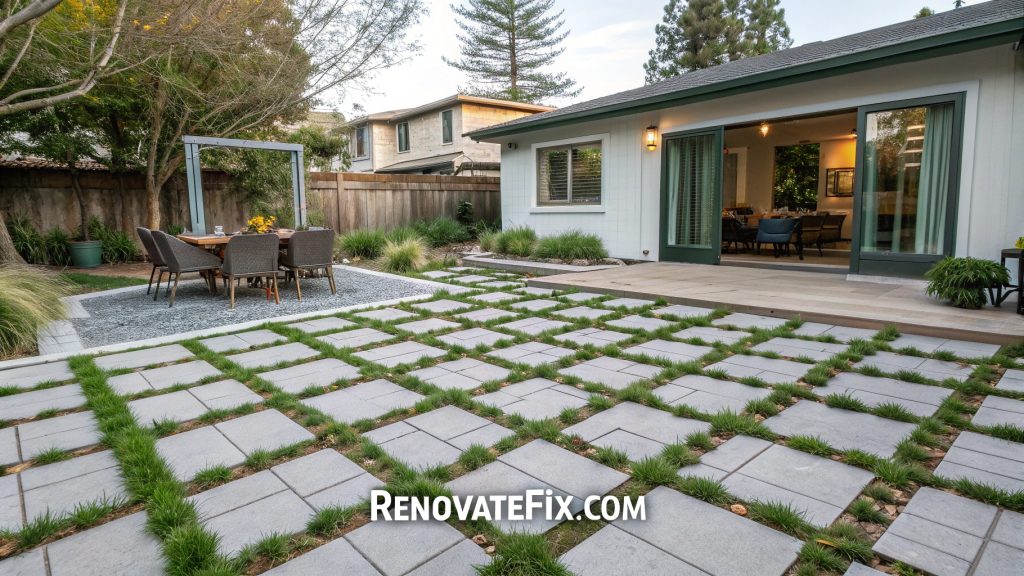
Water-permeable materials reduce harmful runoff by allowing rainwater to slowly filter into soil rather than overwhelming storm drains.
These sustainable hardscaping choices prevent puddle formation after storms while supporting groundwater recharge and reducing irrigation needs during dry periods.
10. Pollinator Gardens
Establish dedicated zones filled with native flowering plants specifically selected to attract bees, butterflies, and hummingbirds.
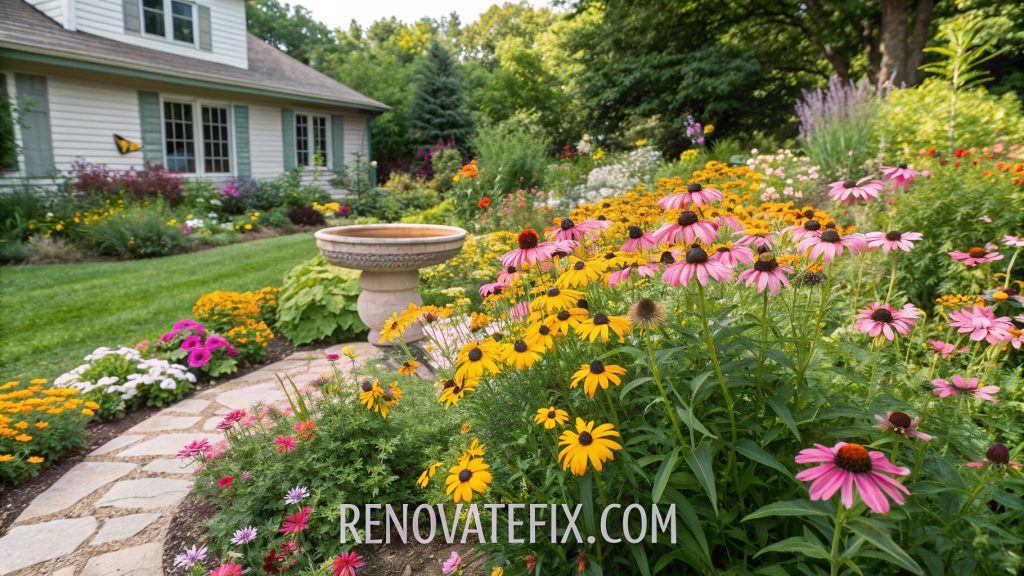
Pollinator-friendly gardens buzz with activity throughout growing seasons, bringing dynamic movement and fascinating wildlife observation opportunities.
These biodiverse planting schemes support crucial ecological functions while providing ever-changing visual interest through successive blooming periods across multiple seasons.
11. Outdoor Kitchen Station
Build functional cooking areas with built-in grills, countertop workspace, storage, and refrigeration for seamless outdoor meal preparation.
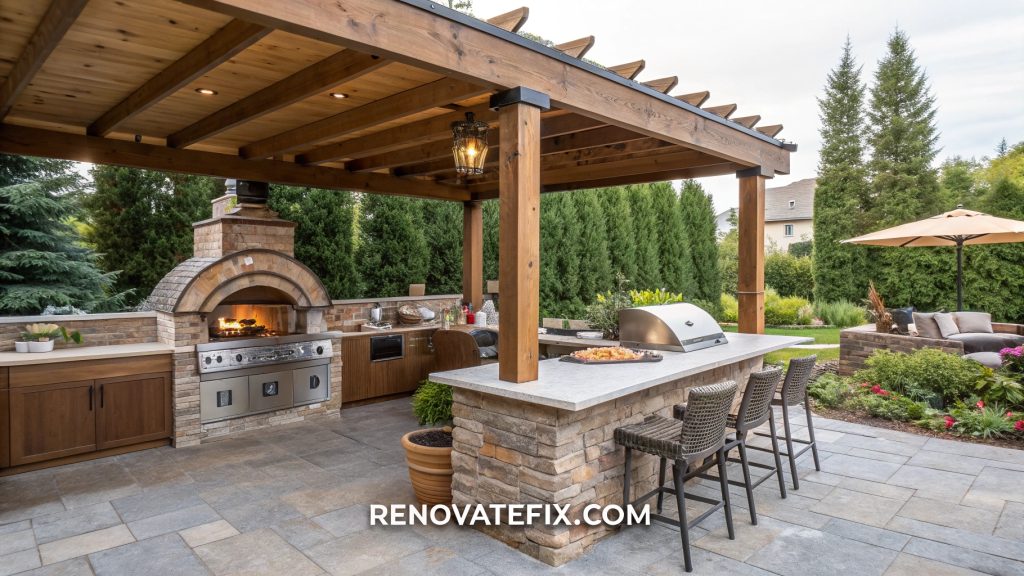
Well-designed outdoor kitchens minimize trips between indoor and outdoor spaces during entertaining events, keeping hosts engaged with guests.
Weather-resistant materials like stainless steel, stone, and specialized outdoor cabinetry ensure longevity despite exposure to elements throughout changing seasons.
12. Zen Rock Garden
Arrange carefully selected stones within precisely raked gravel or sand patterns to create meditative spaces inspired by minimalist principles.
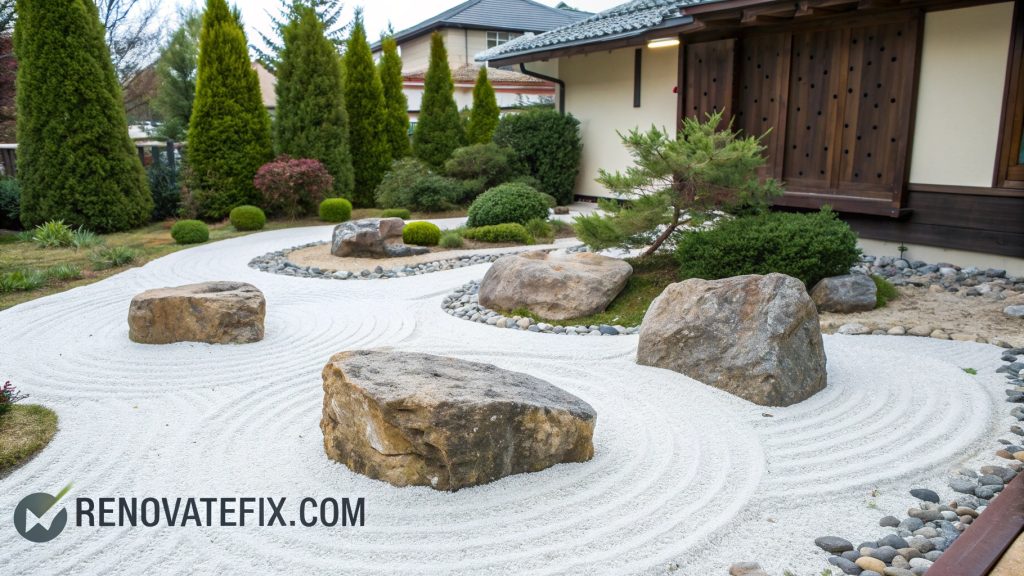
Rock gardens require extremely low maintenance while providing year-round visual structure regardless of seasonal changes affecting surrounding plantings.
These contemplative spaces encourage mindful observation through subtle variations in texture, shadow patterns, and the pleasing mathematical relationships between carefully positioned elements.
13. Naturalistic Rain Garden
Construct shallow depressions planted with moisture-loving native species that capture, filter, and slowly absorb stormwater runoff.

Rain gardens solve drainage problems while creating habitat for specialized plant communities adapted to fluctuating moisture conditions.
These functional landscape features prevent erosion during heavy downpours while reducing municipal water treatment demands through natural filtration processes.
14. Mixed Border Plantings
Establish deep, layered planting beds combining trees, shrubs, perennials, and groundcovers for maximum visual impact year-round.

Well-designed mixed borders create living screens offering privacy while providing habitat diversity supporting numerous wildlife species.
These complex plant communities demonstrate ecological succession principles while offering constant seasonal interest through carefully orchestrated bloom times, fruit production, and foliage color changes.
15. Children’s Adventure Zone
Develop dedicated play areas incorporating natural elements like logs, boulders, and sand pits alongside traditional playground equipment.
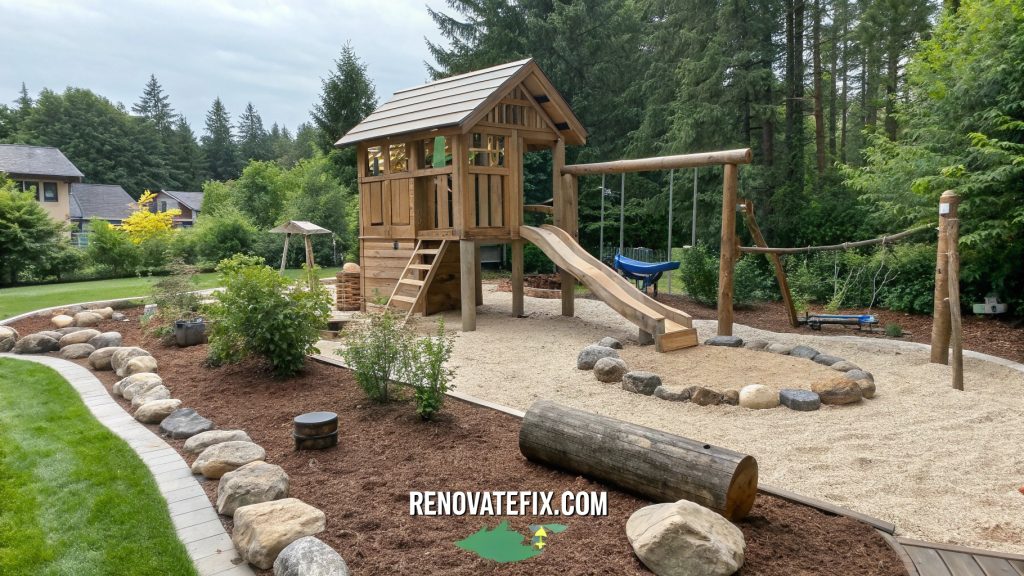
Nature-based play spaces stimulate creativity and physical development through open-ended interaction possibilities not found in manufactured playsets alone.
These multisensory environments encourage risk assessment skills and confidence building while fostering genuine appreciation for outdoor environments from early childhood onward.
16. Backyard Wildlife Habitat
Create diverse ecosystems with layered vegetation, water sources, shelter options, and food-producing plants to attract local fauna.
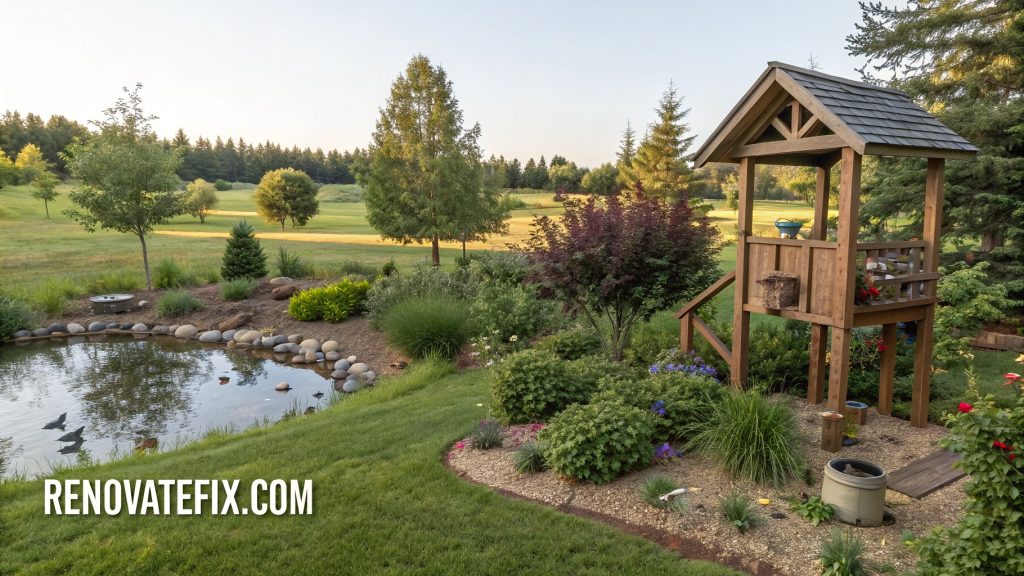
Certified wildlife habitats support conservation efforts by providing crucial resources for displaced species affected by urban development.
These biodiverse spaces connect fragmented wildlife corridors while offering fascinating observation opportunities from bird watching to seasonal migration patterns.
17. Gravel Mediterranean Garden
Establish drought-resistant planting schemes using silver-leaved herbs, lavender varieties, and structural succulents in gravel-mulched beds.
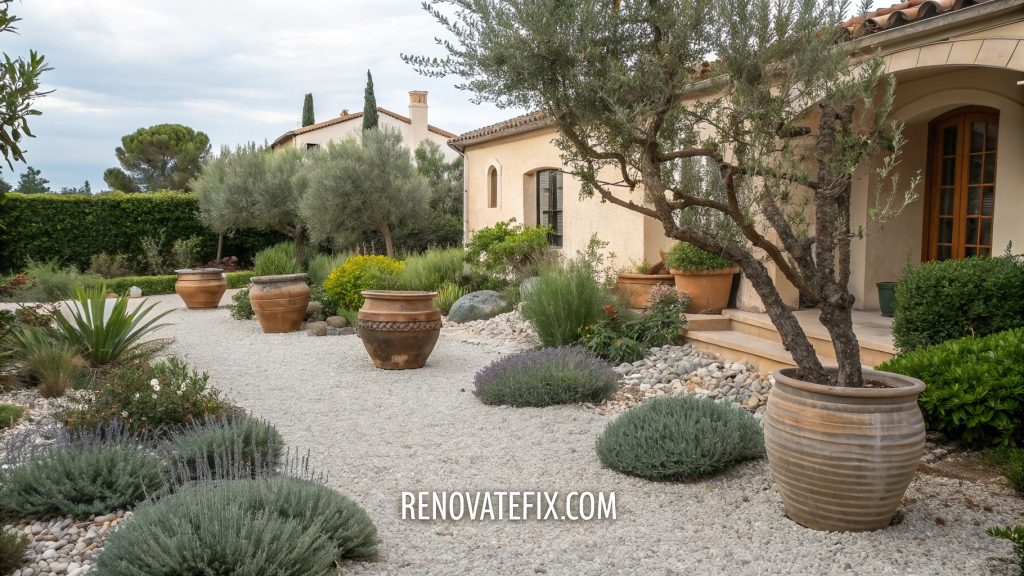
Mediterranean-inspired gardens thrive with minimal irrigation once established, saving water resources while providing aromatic experiences.
These climate-appropriate landscapes celebrate plant adaptations to challenging conditions through interesting leaf textures, sculptural growth habits, and surprising seasonal flowering displays.
18. Outdoor Movie Screen
Mount weather-resistant projection surfaces against walls or between posts with comfortable seating arranged in theater-style configuration.
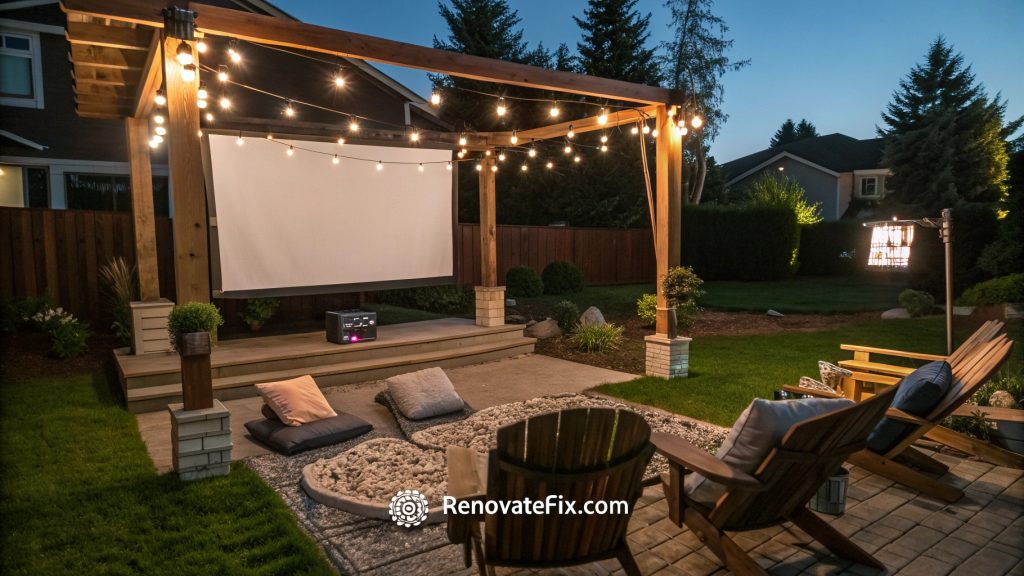
Backyard cinema setups extend entertainment possibilities beyond indoor spaces, creating memorable gathering experiences under open skies.
Portable options allow flexibility for occasional use while built-in systems with weatherproof components offer convenient setup for frequent movie enthusiasts.
19. Xeriscape Demonstration Area
Showcase water-wise landscaping techniques through strategic grouping of drought-adapted plants with similar irrigation needs.
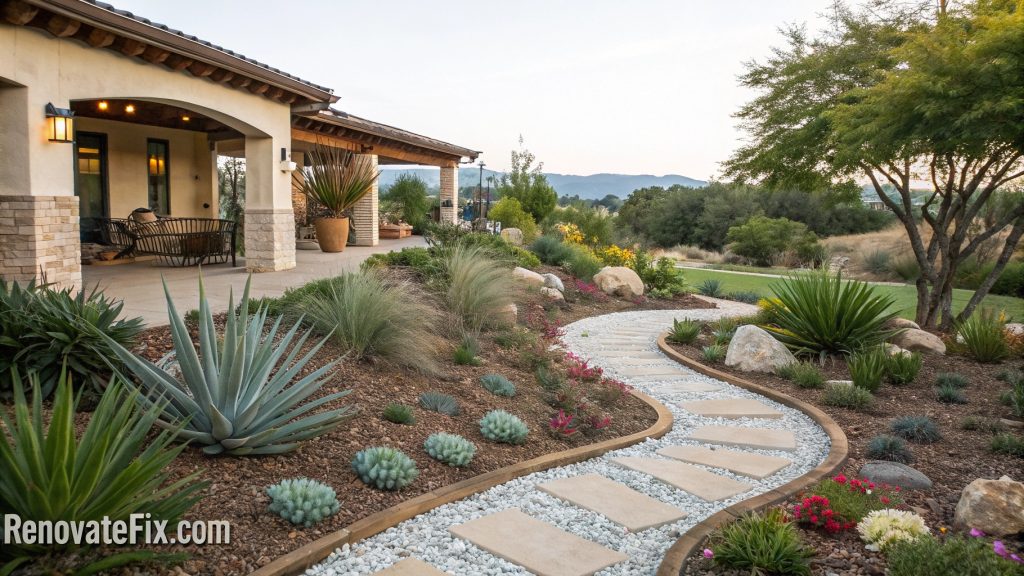
Xeriscaped zones dramatically reduce water consumption while maintaining visual appeal through carefully selected species with complementary attributes.
These forward-thinking landscapes demonstrate environmental responsibility while providing valuable examples for neighbors considering similar conservation measures.
20. Rustic Arbor Entrance
Construct wooden archways covered with flowering vines to create defined transitions between different garden rooms or zones.
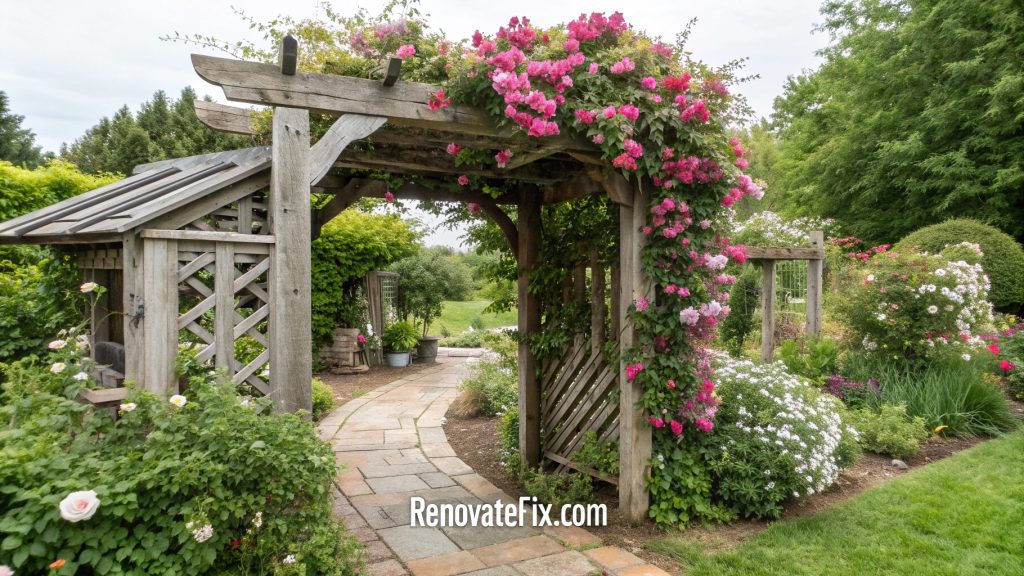
Vegetated arbors establish dramatic entryways while providing vertical growing space for climbing plants with seasonal interest.
These architectural elements draw visitors forward through garden spaces while framing views beyond their openings, creating anticipation for discoveries within connected areas.
21. Year-Round Berry Patch
Plant carefully selected varieties of strawberries, blueberries, raspberries and other small fruits for extended harvest periods.
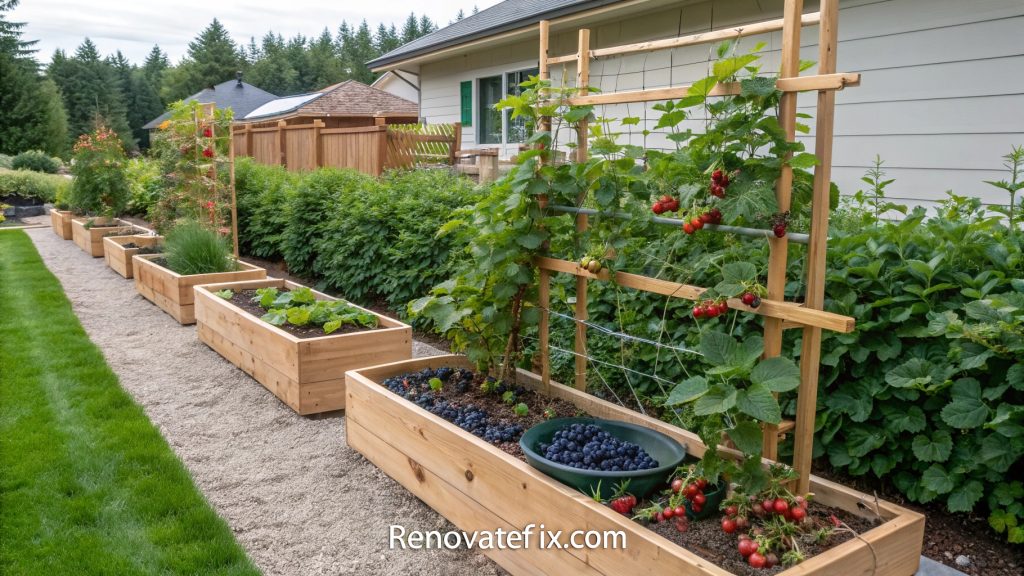
Productive berry gardens combine ornamental qualities with edible rewards, offering attractive foliage, flowers, and colorful fruits.
Strategic variety selection extends fruiting seasons across many months while providing different flavors, nutritional benefits, and culinary applications.
22. Curved Garden Beds
Form flowing, sinuous planting areas with gentle bends and organic shapes rather than straight lines and sharp angles.
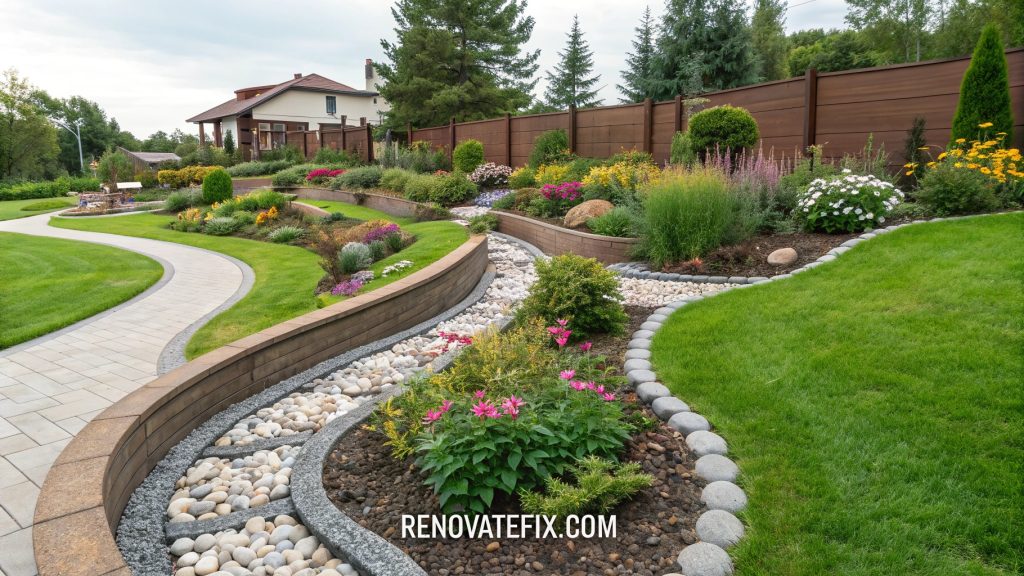
Curvilinear design elements mimic patterns found throughout natural landscapes, creating visually pleasing compositions without artificial rigidity.
These graceful forms slow visual progression through garden spaces, encouraging exploration while softening harsh architectural elements nearby.
23. Artistic Focal Elements
Position sculptures, artistic birdbaths, or decorative obelisks as striking visual anchors within planted landscapes to express personal style.
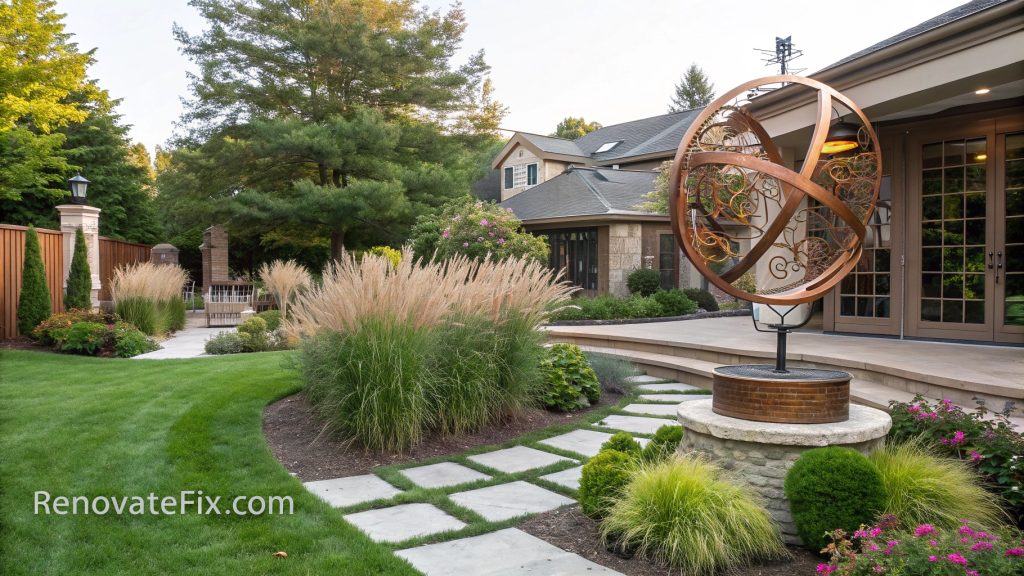
Carefully placed art pieces provide non-living interest during dormant seasons when surrounding plants lack visual impact.
These permanent installations establish strong focal points that organize surrounding plant compositions while reflecting homeowner personalities and aesthetic preferences.
24. Miniature Fruit Orchard
Plant dwarf or espaliered fruit tree varieties in limited spaces to create productive yet compact growing systems.
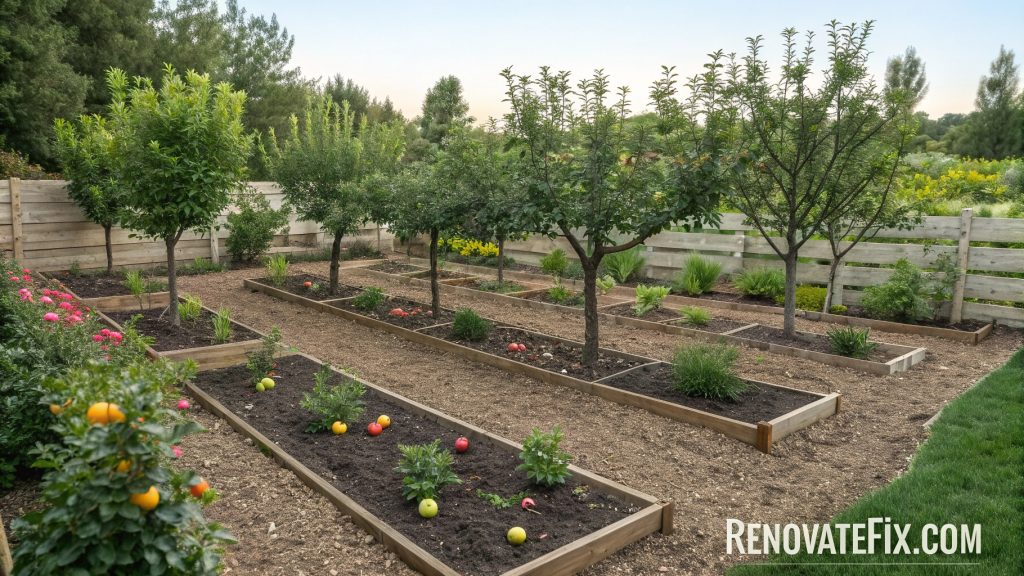
Small-scale orchards bring seasonal delight through spring blossoms, summer fruit development, and fall foliage without overwhelming modest properties.
Modern breeding advances allow significant harvests from trees requiring minimal square footage when properly pruned and maintained.
Conclusion
Reimagining your backyard through thoughtful landscaping represents far more than mere aesthetic improvement—it fundamentally transforms how you experience and utilize your outdoor environment.
The 24 ideas presented offer starting points for creating spaces that resonate with your specific needs, preferences and regional conditions. Remember that successful landscaping evolves gradually, often improving with time as plants mature and elements weather naturally.
Begin with foundational aspects that establish your overall vision, then implement additional features incrementally as budget and time permit.
Whether prioritizing sustainability, entertainment functionality, or peaceful relaxation, your backyard holds tremendous potential to become your most cherished living space—one that connects you with nature while reflecting your unique personal style.
